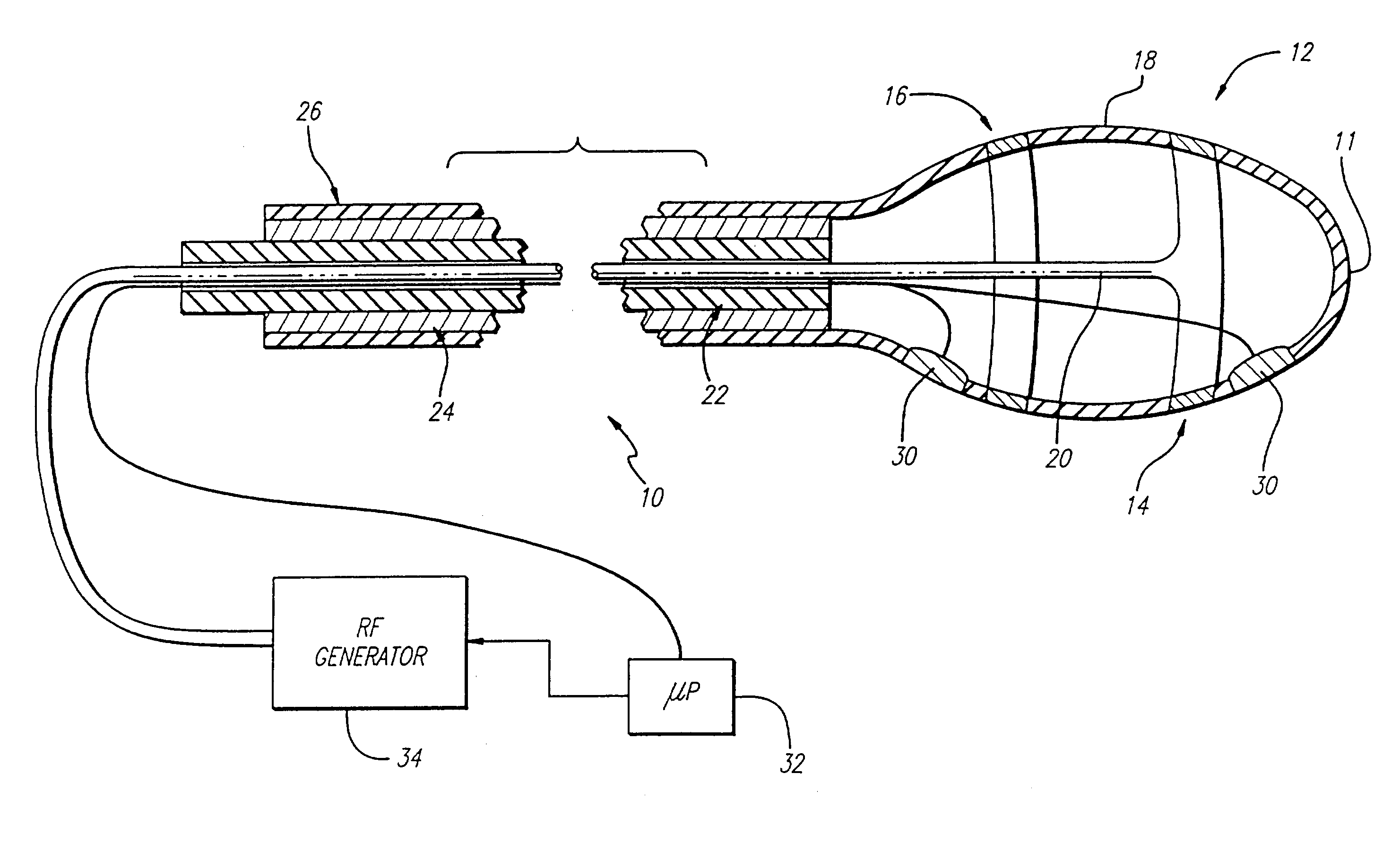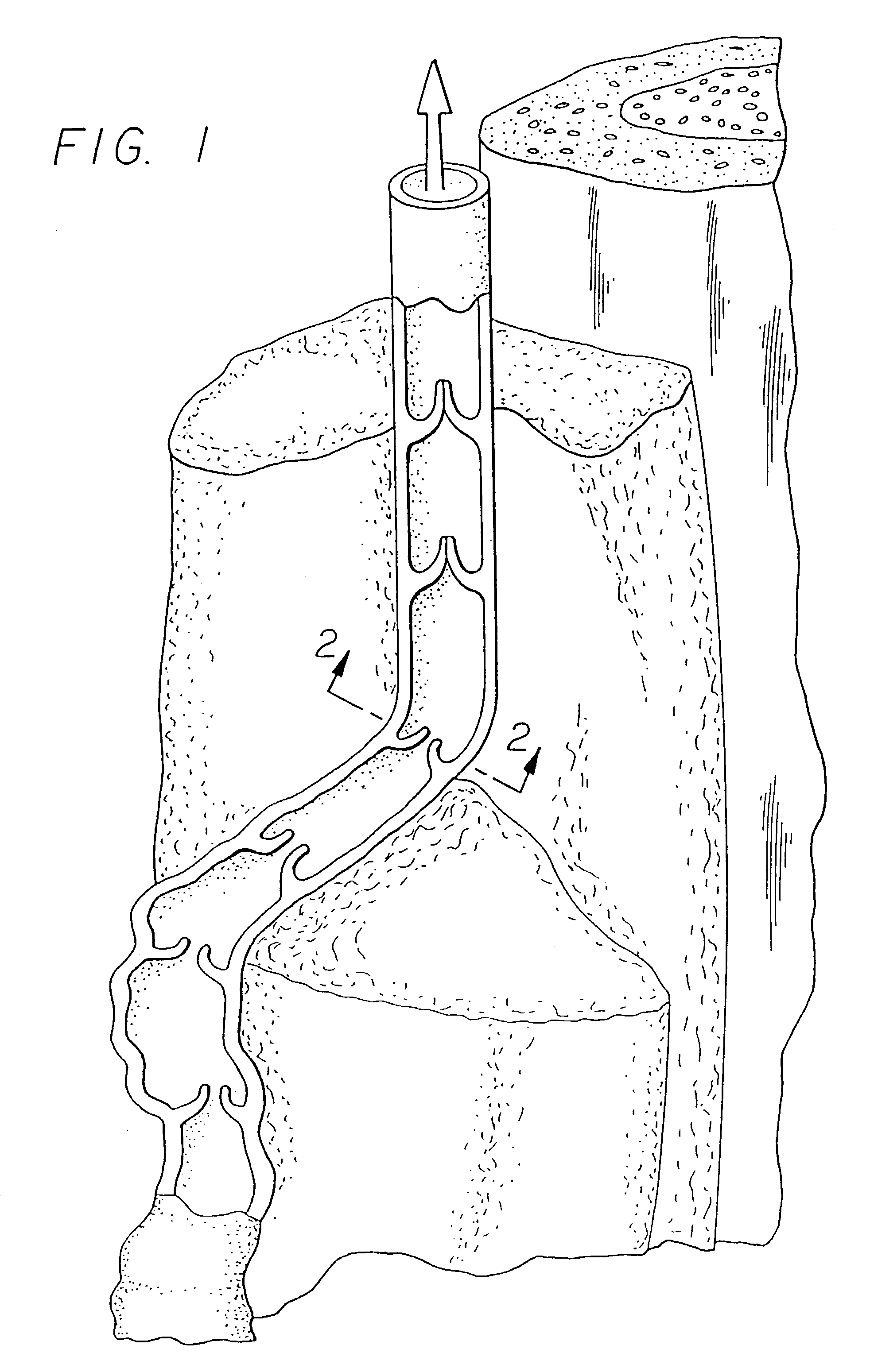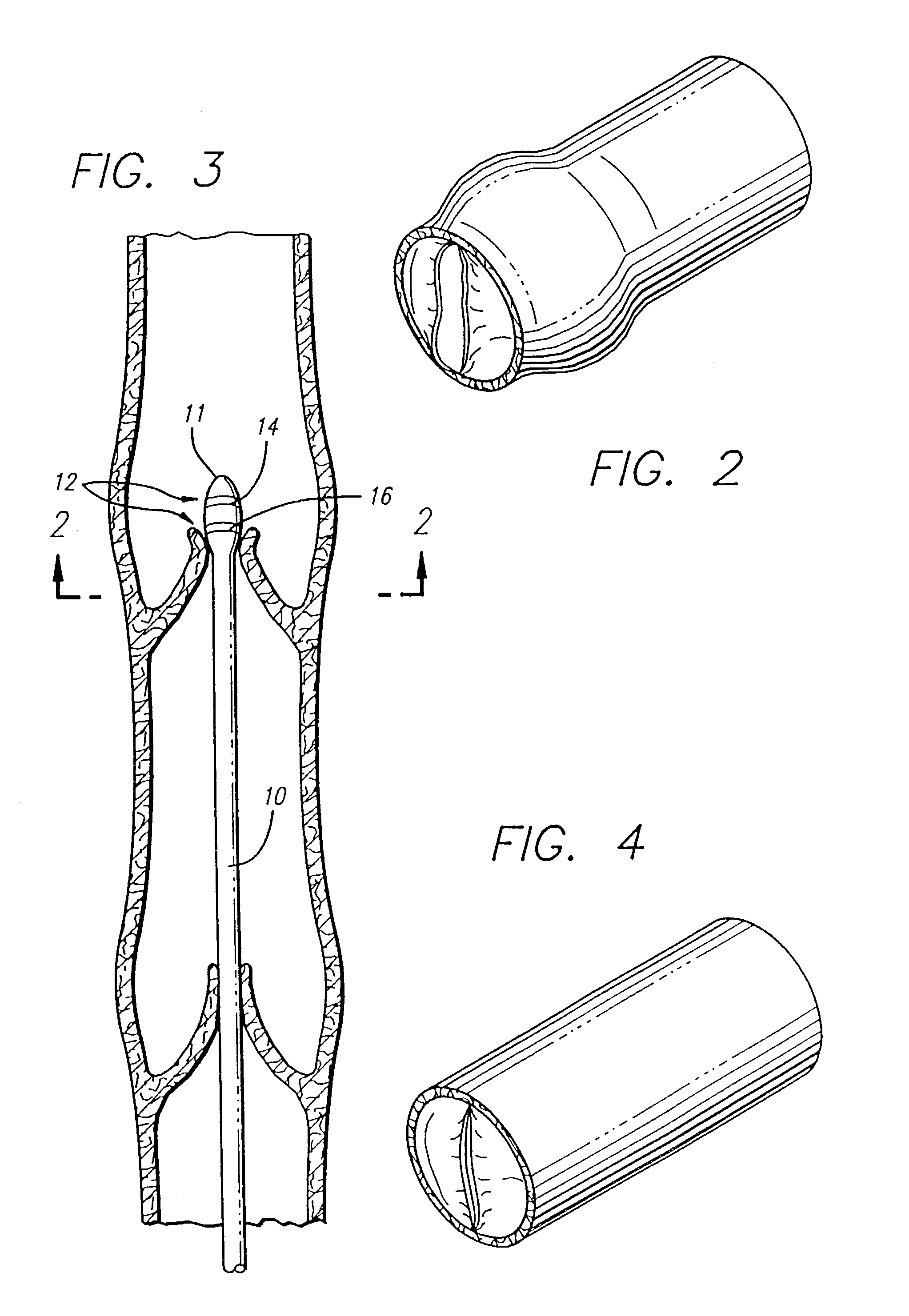Apparatus for treating venous insufficiency
- Summary
- Abstract
- Description
- Claims
- Application Information
AI Technical Summary
Benefits of technology
Problems solved by technology
Method used
Image
Examples
Embodiment Construction
[0051]As shown in the exemplary drawings, the invention is directed toward the intravenous treatment of veins using a catheter to deliver at least one electrode to a venous treatment site. As used herein, like reference numerals will designate similar elements in the various embodiments of the present invention to be discussed. In addition, unless otherwise noted, the term working end will refer to the direction toward the treatment site in the patient, and the term connecting end will refer to the direction away from the treatment site in the patient. The invention will be described in relation to the treatment of the venous system of the lower limbs. It is to be understood, however, that the invention is not limited thereto and may be employed intraluminally to treat veins in other areas of the body such as hemorrhoids, esophageal varices, and venous-drainage-impotence of the penis. Furthermore, although the invention will be described as using RF energy from the electrode, it is ...
PUM
 Login to View More
Login to View More Abstract
Description
Claims
Application Information
 Login to View More
Login to View More - R&D
- Intellectual Property
- Life Sciences
- Materials
- Tech Scout
- Unparalleled Data Quality
- Higher Quality Content
- 60% Fewer Hallucinations
Browse by: Latest US Patents, China's latest patents, Technical Efficacy Thesaurus, Application Domain, Technology Topic, Popular Technical Reports.
© 2025 PatSnap. All rights reserved.Legal|Privacy policy|Modern Slavery Act Transparency Statement|Sitemap|About US| Contact US: help@patsnap.com



